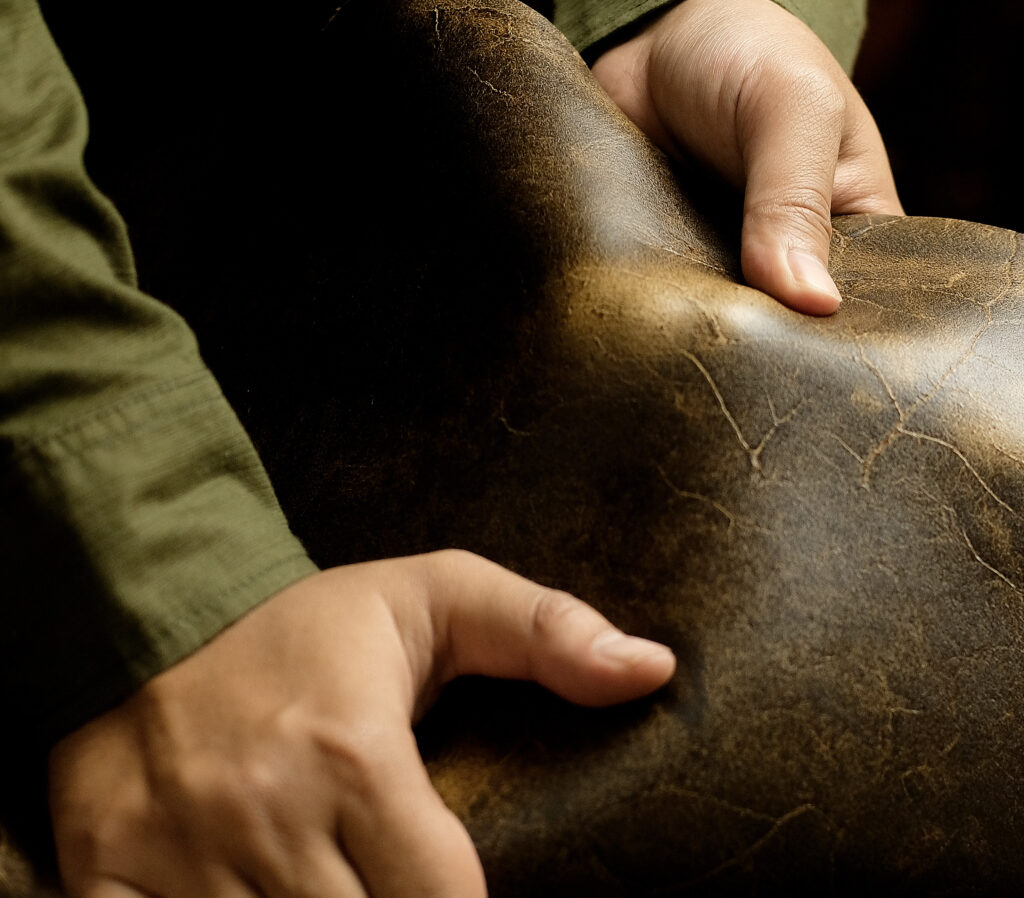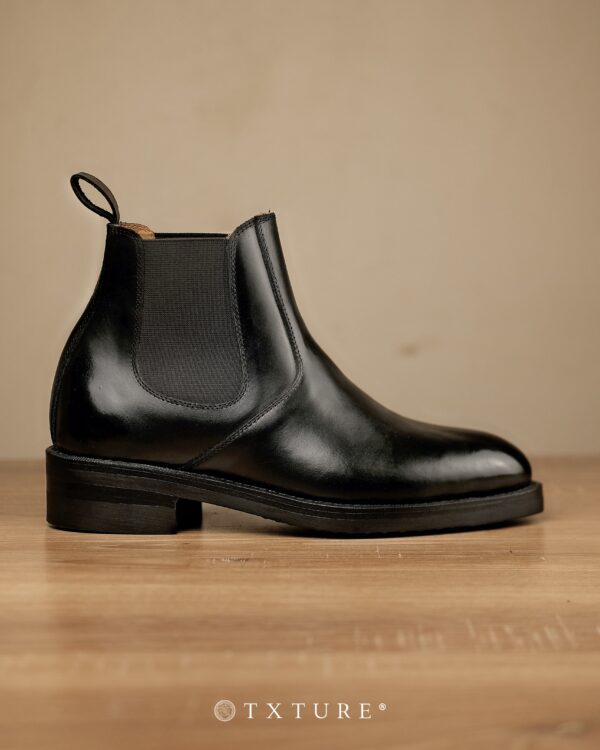
Introduction
The world of leather tanning is a captivating realm where craftsmanship, innovation, and history converge to create exquisite leather products. From the efficient and widely employed chromium tanning to the time-honored artistry of vegetable tanning, and the preservation of ancient techniques through smoke tanning, each method carries its distinct allure and characteristics. In this article, we delve into the intricate processes and unique attributes of these tanning methods, shedding light on the artistry behind the creation of luxurious leather goods. By understanding the intricacies of different tanning methods, we gain a deeper appreciation for the artistry and diversity within the leather industry. In this article, we embark on a journey through different types of tanning techniques: Chromium Tanning, Vegetable Tanning, and Smoke Tanning. While a fourth method, synthetic tanning, has gained prominence in recent years.
Chromium Tanning: The Modern Marvel of Leather Processing

Chromium tanning, as the name suggests, involves the use of a chemical compound called Chromium(III) sulfate ([Cr(H2O)6]2(SO4)3) to process the leather. This method emerged in 1858 when tanneries sought ways to expedite the process and reduce costs. Today, chrome tanning accounts for over 90% of the world’s leather production. It was initially invented by German technologist Friedrich Knapp and Swedish chemist Hylten Cavalin, but it was American chemist Augustus Schultz who patented the chrome tanning process.
Chromium tanning involves treating the hide with a solution of chemicals, acids, and salts, resulting in a remarkably quick tanning process that can be completed in a matter of days. The benefits and characteristics of chromium tanned leather include:
- Wide variety of colors and textures: Each tannery imparts its unique color characteristics to the leather, offering a diverse range of choices for discerning customers.
- Durability and richness: Chromium tanned leather is known for its exceptional durability, making it ideal for long-lasting products that exude a luxurious appeal.
- Softness and suppleness: Compared to other tanning methods, chromium tanned leather is thinner and softer, ensuring a comfortable and flexible experience.
- Resistance to water, stains, and heat: The inherent properties of chromium tanned leather provide excellent resistance to moisture, stains, and heat, ensuring the longevity of the leather product.
- Versatility in treatment: Various leather treatments can be applied to chromium tanned leather, enhancing its appearance and functionality according to individual preferences.
Chromium Tanned Leather: For Those Seeking Elegance and Variety
If you desire a softer leather that beautifully ages over time, while offering an extensive array of colors to suit your taste, chromium tanned leather is the perfect fit. Its versatility, durability, and refined appearance make it an excellent choice for crafting high-quality leather products that stand the test of time.
Vegetable Tanning: A Time-Honored Tradition Resurrected

Vegetable tanning, on the other hand, represents an ancient and traditional method that predates chrome tanning. This process relies on natural and vegetable ingredients, hence its name. Numerous plant materials such as oak, spruce bark, quebracho, tara pods, olive leaves, rhubarb roots, or mimosa are commonly used. The tannins extracted from these plants are combined with the skins and hides in pits. As the tannins are derived from plants, the resulting leather is known as veg-tan leather or “natural leather.”
Vegetable tanning has a rich history spanning over 5,000 years and was the primary method employed for centuries. Archeological evidence from ancient Egypt reveals that vegetable tanning was practiced as early as the 4th millennium BC. Over time, modern and industrialized tanning methods gained popularity, reducing the prevalence of vegetable tanning to approximately 10-12% of total leather production today. Vegetable tanning is a time-consuming process that requires highly skilled artisans. Hides are soaked in concentrated tannins for several months, resulting in thick and hard-wearing leathers. One of the key advantages of vegetable-tanned leather is its environmental friendliness, as all materials involved are biodegradable. It possesses an earthy and natural feel and develops a unique patina as it ages. Many heritage enthusiasts appreciate veg-tan leather for its ancient and traditional characteristics.

Characteristics and Benefits of Vegetable Tanned Leather
Vegetable tanned leather possesses distinct characteristics that appeal to those seeking a connection to heritage and a more environmentally conscious approach. Here are some notable features and benefits of vegetable tanned leather:
- Ancient heritage and tradition: Vegetable tanning is deeply rooted in history and represents a timeless tradition that has been practiced for thousands of years.
- Thick and hard-wearing: The leather produced through vegetable tanning is known for its thickness and durability, making it ideal for rugged and long-lasting products.
- Biodegradable and eco-friendly: Unlike synthetic materials, vegetable tanned leather is derived from natural sources and is biodegradable, minimizing its impact on the environment.
- Earthy and natural feel: The use of plant-based tannins gives vegetable tanned leather a distinct earthy aroma and a natural feel that connects wearers to the authenticity of the material.
- Development of a rich patina: Over time and with use, vegetable tanned leather develops a beautiful patina, showcasing its journey and unique aging process.
- Organic and alive: The natural tanning process imbues the leather with a sense of vitality, resulting in a product that feels more organic and alive compared to chemically processed alternatives.
Choosing Vegetable Tanned Leather for Timeless Beauty
If you appreciate the rich patina and the embrace of tradition, vegetable tanned leather is the ideal choice for your leather goods. Its robustness, eco-friendly nature, and connection to centuries-old craftsmanship make it a perfect selection for those who value heritage and timeless beauty.
Smoke Tanning: Preserving the Ancient Craftsmanship
Smoke tanning represents a primitive and historic method used by indigenous communities, such as North American Indians, to preserve animal skins. Smoke tanning involves using ash, quick lime, or smoke to remove hair from the animal skins and prevent them from becoming hard due to moisture. The process involves exposing the hides to smoke, which not only aids in hair removal but also waterproofs the surface of the leather. The darker color of the smoke helps conceal dirt, maintaining a cleaner appearance.

Credit: Crow’s Nest. Wildcraft
Honoring Tradition Through Primitive Techniques
To successfully smoke-tan a hide, certain guidelines must be followed. Firstly, hardwood, preferably rotten to the point of being easily breakable, is the best choice for generating smoke. Secondly, the fires used should emit low heat and not produce any flames, as direct contact between fire and hides can be detrimental. Lastly, the duration of smoking depends on personal preference, but ensuring that the hides receive a sufficient amount of smoke is essential.
Embracing the Legacy of Smoke Tanned Leather
Undertaking the process of tanning hides through smoke tanning is no simple task. It requires time, effort, and a willingness to learn and experiment. However, during periods when the fur market is weak, engaging in the practice of tanning hides allows individuals to gain valuable experience and knowledge while maximizing the potential of the leather. Learning traditional hide tanning methods not only connects individuals with ancestral knowledge but also ensures the preservation of heritage techniques.
Synthetic Tanning: Innovating Efficiency and Sustainability
In addition to the aforementioned tanning methods, a fourth type known as synthetic tanning has emerged in recent years. Synthetic tanning involves the use of chemical compounds that mimic the tanning properties of natural substances. These synthetic tanning agents offer advantages such as reduced tanning time, increased uniformity in the tanned leather, and enhanced resistance to stretching and shrinking. Furthermore, synthetic tanning eliminates the need for certain environmentally harmful chemicals used in other methods. While synthetic tanning is still relatively new compared to traditional methods, its adoption is gradually increasing due to its efficiency and ecological considerations.
However, it is important to note that synthetic tanning, while it can utilize sustainable materials, primarily relies on synthetic substances that are significantly different from leather. This fundamental difference in materials results in a noticeable disparity in quality compared to other tanning methods.

Final Thoughts
Understanding the various tanning methods allows individuals to make informed choices when selecting leather products. Each method offers unique characteristics and benefits. For those seeking softer, color-rich leather that develops a beautiful patina over time, chrome-tanned leather is an excellent option. On the other hand, if one values the heritage, tradition, and eco-friendliness of the tanning process, vegetable-tanned leather is a suitable choice. Meanwhile, smoke-tanned leather appeals to those interested in exploring primitive tanning methods and appreciating the historical significance of the technique. It is important to note that at TXTURE, we prioritize the use of high-quality materials and craftsmanship, and therefore, we do not utilize synthetic tanning. While synthetic tanning may offer sustainability, it often lacks the luxurious touch and relies heavily on synthetic materials, which does not align with the spirit and philosophy of TXTURE.
Ending Notes
At TXTURE, we understand the importance of high-quality leather in crafting exceptional leather goods, we believe in the artistry and authenticity of leather craftsmanship. We are dedicated to providing you with leather products that embody the finest materials and meticulous tanning processes, that’s why we utilize both famous tanning methods: chrome tanning and vegetable tanning. Our commitment to craftsmanship and attention to detail ensure that every product we create exudes strength, durability, and timeless beauty.
If you’re looking for leather products that embody the finest materials and meticulous tanning processes, explore our collection at TXTURE. Discover the elegance and variety of chrome-tanned leather or embrace the heritage and eco-friendliness of vegetable-tanned leather. With TXTURE, you can experience the artistry and luxury of leather goods that stand the test of time.
Make the choice that resonates with your values and preferences. Explore our collection at TXTURE today and experience the timeless beauty and durability of our leather goods.













Thank you for this education
You’re welcome! We’re glad you found the article informative and educational. If you have any more questions or need further clarification, feel free to ask. We’re here to help!
I need a formula for chromium tanning by weight of skins. I am now using alum sulfate.
Thank you for your comment! When it comes to the formula for chromium tanning by the weight of skins, the specific details may vary depending on factors such as the desired results and the type of chromium compound being used. However, a common approach involves determining the appropriate concentration of chromium sulfate or chromium salts based on the weight of the skins.
To ensure accurate and safe results, it’s recommended to consult with a tanning expert or chemist who can provide you with the precise formula and guidelines for chromium tanning using alum sulfate. They can take into account the specific characteristics of your skins and provide you with the best approach for achieving optimal results.
The title is “Four Types of Tanning Methods: …” and then lists only three tanning methods. What is the fourth?
Thank you for pointing that out. Apologies for the confusion caused by the discrepancy in the title. The article initially mentions four types of tanning methods: Chromium Tanning, Vegetable Tanning, Smoke Tanning, and Synthetic Tanning. However, upon further reading, it focuses on discussing three prominent methods: Chromium Tanning, Vegetable Tanning, and Smoke Tanning. Synthetic Tanning is briefly mentioned but not explored in detail within the article. We appreciate your feedback and apologize for any confusion caused by the title.
The style that you write make it really trouble-free to read. And the design you use, wow. Its a really good combination. And I am wondering what is the name of the template you use?
your RSS feed to keep up to date with forthcoming post.
Hello, you used to write fantastic, butt the last several posts have been kinda boring…